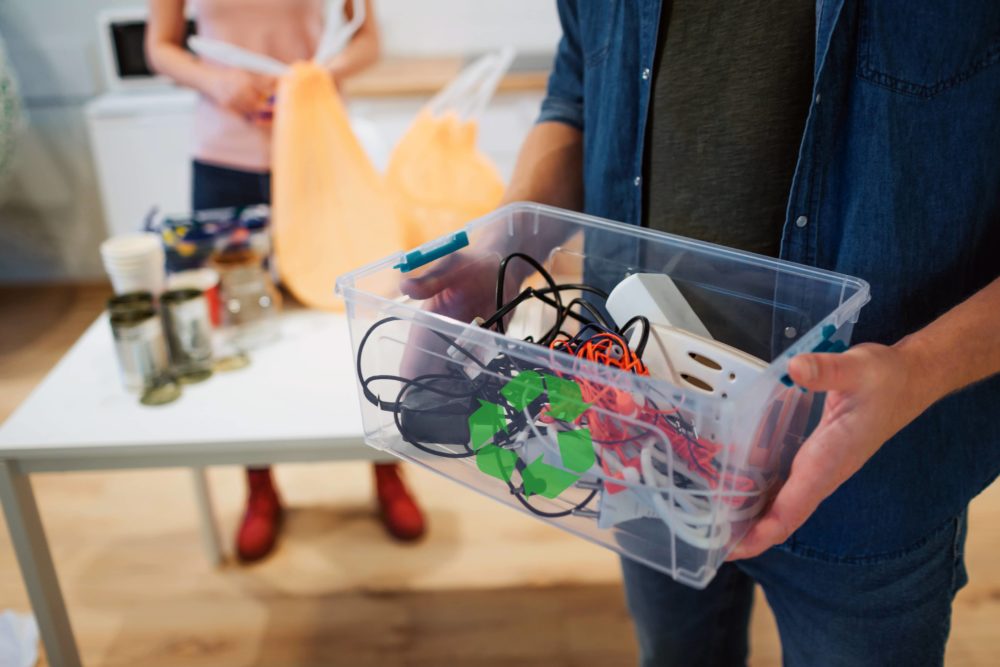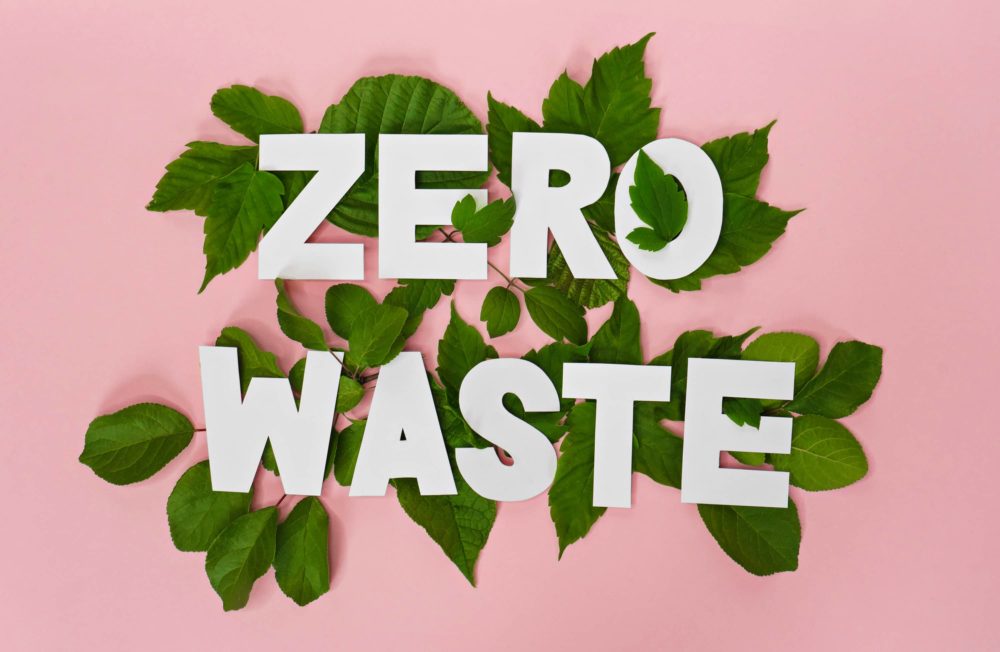The 21st-Century Recycling Challenge
Like so many things in an ever-changing society, recycling is not what it used to be. Starting back in the 1970s, environmentally-conscious citizens became aware that the “throwaway society” that had been the American norm in previous decades had come to an end. Looking around at pollution in our rivers and streams and the diminishing capacity of our landfills, we learned there was no such thing as “away,” as in “throw it away.” What we thought was “trash” could contain actual value. We learned to recycle.
Recycling in earlier times was easy to visualize. Save trees by recycling paper. Return bottles and cans for refunds on deposit. Put recycling in bins to be picked up curbside. Kids learned about it in schools and recycling became part of our routines.
Then it got complicated. Paper, okay. Bottles and cans, okay. Plastic bottles? Check the number on the bottom. Paper cups? Not if they’re hot cups. Paper or plastic food containers? Possibly. Straws? Please, no! As new products kept appearing, what to do with them became a question.
Now, forging ahead into the highly technological 21st century, we face serious 21st-century recycling issues. Look around: All of the things in our offices and homes that help us do our work or play—flat-screen TVs, cell phones, laptops, computers, monitors, printers, almost anything with cords, as some recyclers advise—all have a life of utility and then, as soon as a new model is out, their usefulness ends and the product enters the stage that recyclers call “the end-of-life” stage. This is the point where, right in our homes and offices, we encounter the future—and it’s filling to the brim with electronic waste. E-waste.
In 2020, the United Nations University (UNU) released a report showing that in 2019, 53.6 million metric tons of electronic waste was generated worldwide, up 21% over the previous five years. They predict the number will reach 74 million tons by 2030. “This makes e-waste the world’s fastest-growing domestic waste stream,” the report states, attributing the rise to higher consumption of electronic equipment combined with shorter life spans and fewer opportunities in the product design for repair. With landfills filling up fast, e-waste has become a major concern worldwide.
California leads the nation in recycling infrastructure, having instigated ground-breaking legislation—SB 20 2003—that created a system for funding e-waste collection and recycling, helping communities to convert covered e-waste products to a new cycle of usefulness. In the North Bay, recyclers in almost every community have systems in place and a wildly ambitious goal in mind. How much e-waste do we want in our landfills? Zero.
Zero waste is a philosophy and a process for managing 21st-century electronic waste safely and responsibly. Communities throughout California have adopted the zero waste goal and are working to help businesses and residents manage their recycling of all end-of-life objects. Zero Waste Sonoma, for example, is a local government entity operating as a joint power authority over all of Sonoma County, helping businesses and residents to reduce, reuse and recycle their no-longer wanted materials in a safe and responsible way. Their goal, like their name, is zero waste.

Is that even possible? “Zero waste is an ambitious goal and a mindset change,” says executive director Leslie Lukacs. The idea driving Zero Waste Sonoma, like all other zero-waste groups, is to consider when products are no longer useful to us, they still have value—like materials. Valuable materials. Toxic materials. Resources to be professionally recycled into a new, useful life cycle.
“So, Zero Waste is taking a step back and looking at e-waste not as a one-way street from customers to landfill,” says Lukacs. “We focus on the circular economy, keeping those resources within the economy as long as possible before being ultimately discarded.” Recycling e-waste is still recycling, but it’s complicated.
Local differences, for example, factor in. “Each community has its own rules,” says Lukacs. “Some things are standardized, but it all depends on what the haulers who collect them can actually process. There is some confusion when people go to other communities—and especially other states.” She points out that while California has extensive capabilities for recycling and composting, other states may present more of a challenge. Also, certain products are more challenging to recycle. In some states, it’s challenging just to recycle glass,” she says, as an example. What exactly constitutes e-waste? “For us, electronic waste is generally electronic items found in the office or an entertainment center—computer monitors, printers, fax machines, radios, stereos, cameras, video games, TVs, microwaves,” says Lukacs. When these products have served us well, they reach the end of their so-called “life cycle,” they become e-waste. Because they contain toxic materials and sometimes precious metals, both toxic to the environment, if discarded improperly, they also have value to the recycler as scrap or potentially refurbished products.
Because of the ubiquitous use of electronics and the economy of planned obsolescence—the practice of designing and producing products that become unusable when newer models appear—the volume of e-waste is increasing, and the consequence is alarming.
“We only have 23 years left on our landfill,” says Lukacs. “Our landfills are a resource. And if Sonoma County doesn’t divert materials from the waste stream, then we’re going to lose that resource. So we have to protect it as long as possible because once that landfill is full, we must export our materials out of the county at a higher cost and export our problems into somebody else’s community.” For her, the absolute necessity is to be self-reliant within the county and to conserve the landfill space as long as possible. “So that’s one of the driving factors of why it was important for us to create the zero waste resolution,” she says. “Preserving the life of the landfill as long as possible through reuse, recycling and composting, is the best way for Sonoma County’s future.”
Placing certain items, like irrigation hoses, in the wrong bins can cause damage to the recycler’s sorting machines, which is costly to maintain or fix. Putting e-waste into normal curbside trash or recycling bins means it may inadvertently end up in a landfill, which is a problem because it can leach toxic heavy metals into the groundwater if landfill areas are not contained. “And some of the older landfills and even some of the modern landfills, they don’t have 100% containment,” says Kevin Miller, manager of Napa Recycling, in Napa. He explains that the old computer, which looks totally harmless on one’s desk, becomes a dangerous substance in a landfill. “We deal with things every day that are hazardous or toxic,” Miller explains. “Let’s take motor oil. When we buy the new motor oil and put it in our car, it’s a product. If it’s used for its intended end use, generally it’s not a hazard. However, you wouldn’t want to drink it. You wouldn’t want to pour it over your lawn. If you put new motor oil in your engine and it does the job it’s supposed to do, it’s not considered a waste. But when it goes through your engine and now it’s all gunked up, now you have a waste product that must be handled in a certain way.” By people who have the know-how, that is, and this is where knowing your location and your local recycler is crucial to applying this complex set of rules appropriate to your own situation.

In Napa, the Recycle More program offers, by appointment, free curbside pickup of e-waste and other items, as listed on their website. The website also offers an extensive explanation—with pictures—of what e-waste is and which products are recyclable, and which need special handling and what cautions apply. While the organization offers free curbside pickup of e-waste, it is important to restate: this curbside is not the regular blue bin. E-waste items should never go in the regular blue bins. Napa businesses and residents can call Napa Recycling (or go to the website) and order a pickup of their e-waste. “They have to make an appointment,” Miller says, noting, again, that electronic waste materials cannot go in the curbside bins. “These [electronic waste items] are all recyclable—in the right way—but they don’t belong in the blue bins.” He explains that the reason they keep the e-waste recycling separate is so they can do it in the right way.
Napa sends its e-waste to Electronics Recycling International, a company based in Fresno, that is fully certified and trusted to handle the waste appropriately. “We went down and visited the site to make sure with our own eyes,” says Miller. He is super-conscientious because, again, improper handling of these hazardous materials can leach toxins into rivers and groundwater and cause damage to health and environmental safety, and can also damage their equipment. Unfortunately, in many areas, because recyclers are not equipped, the e-waste gets shipped overseas, usually to poor countries, which suffer the health and environmental consequences out of sight of the affluent populations who purchased [and discarded] the items in the first place.
“Most responsible electronic recyclers own their inspections,” says Miller, “and they make sure if you do send something overseas, they have their own inspection processes. It’s not that difficult to have it handled responsibly and effectively. California is ahead of a lot of states on that front.”
The conscientious recycler should go to naparecycling.com, click on “Recycle More” and go to the e-waste page. There is detailed information about types of items, how they are recycled, or where to drop them off. To find out about Electronic Recyclers’ qualifications, he advises visiting their website, eridirect.com. What is the hardest item to get rid of? Smoke detectors, Miller says. “They’re not accepted by any scrap metal recycler and if you’re really, truly being responsible you have to mail it back to the manufacturer.” These items contain PCBs and radioactive materials, toxic to the environment.
What is the easiest item to get rid of? “Anything that’s included in this Recycle More program—that’s the easiest. For Napa. Because we’ll come to your home,” says Miller.
The best long-term solution, according to Miller is a concept called Extended Producer Responsibility (EPR). The whole idea is that we need more programs where the onus is on the producer of the product. Take an old fluorescent tube that burned out, for example. “You should be able to buy a replacement and [the producer] would take the old one back. But we don’t have that,” he says. “Right now, the ‘End of Life’ is on the taxpayers. It should be part of the producers’ system. They know their product, they’re the best set up to know how to a.) reduce the toxicity if they can, and b.) be responsible for taking it back.”

He cites a few examples locally where that is already working. “The best example is ‘Paint Care,’” he says. In California, there is now an EPR program for paint, so you can take old paint into virtually any paint store to have it recycled. “We need more EPR,” he says. “We need more systems.” He points to the EU as an example. “The EU is way ahead of us and has been for years. If you buy a computer from Apple in some of the European countries, you don’t get it in a box with a bunch of Styrofoam packaging. You get it in something like a suitcase. Form fitted. You take it home, put it in, and then return the suitcase. So, there’s no waste to deal with. Why did they do that? Because they’re forced to by the EU legislation.”
E-Waste Collective, in Novato, recycles, refurbishes and distributes computers to deserving individuals, reselling some of the reusable items that come in the door that have value. When a business or resident in Novato brings their out-of-date equipment to Ron Berry, executive director of E-Waste Collective, they not only take care of their part of the end-of-life process of their electronic material, but they help enable people without resources to get the computers they need. “We are providing a service; we’re fulfilling a need,” says Berry.
“We usually give away around 600 computers a year,” says Berry. “Last year was a bit off, due to the pandemic.” But the company is back in stride now.
Their main service—recycling—has a civic mission that serves the whole county. “We help keep electronic waste out of the landfill.” With a 23-year ceiling on the life of Sonoma’s only landfill, that is a big mission. In addition, he points out, their business contributes to the economy by employing a dozen full-time people. All in all, this is a business that serves itself, its customers, certain deserving individuals, and the county at large through the complicated operations that all revolve around renewing, reusing, recycling electronic waste.
“We get directly reimbursed from the State of California through the Covered Electronic Waste (CEW) program,” says Berry. “They pay us a recycling fee per pound for things like CRT televisions, flat-screen TVs and whatnot, all down the line.” He gets paid by recyclers who can break down for scrap value those computers he cannot refurbish. These, in addition to toxins, can contain valuable materials, precious metals. “There’s a long list of things we actually get a scrap value for—the black housing, the plastic, the glass, the metal,” he says.
When it comes to cell phones and hard drives, private information is a common concern among donors. How are they to be sure there is no private material left on the drives or phones when they go to recyclers or other users? Should they be bashed in, just to be sure? No.
“For a small fee, we make sure that all the information is removed and we can either destroy the hard drives or we can wipe the hard drives clean and reuse it,” says Berry. He apologizes that they may not be able, given the workload, to do the wipe while the customer waits. What we do for our customers, he says, is send an email confirming that the drive was wiped and the data’s been removed from your device. Many businesses want something more official and so we’ll provide a “Certificate of Destruction” to them at no extra cost. “We guarantee the drive was destroyed or at least wiped,” he says. “If it turned out that that wasn’t true, we would be liable.”

He takes materials from all corners—businesses, residents, schools, nonprofits. “I’ve been in this business for about 12 years now,” he says. “We do our best to keep everything out of a landfill. When somebody comes in with loads of trash and garbage, we turn them away.” What kinds of things do they not accept? “We can’t accept anything we don’t have an outlet for.” Toner and ink cartridges, for example. Floppy discs. “I do not know anywhere where we can dispose of floppy discs—other than a landfill.” So, he can’t accept them. “Our policy is that nothing that we accept goes into a landfill.” Same thing with solar panels, which are also difficult to dispose of because of their toxic materials and size. He cannot accept those, or satellite dishes. “Our Novato location is kind of small,” he says, “and those end up taking a lot of room.” Other items, such as smoke alarms, which contain PCBs and radioactive material, are almost impossible to place, and the owner is directed to contact the manufacturer or seller of the item. “If I were to take those to a recycler, I would get charged $25 per smoke alarm,” he says. “So, we’re not going to do that.”
The takeaway from Ron Berry, Kevin Miller and Leslie Lukacs is the same: since there is no one standardized infrastructure in which everyone can recycle everything in a uniform way, people with products nearing the end of life need to contact their local recycler. Start by visiting their websites, where the information is clear, specific and easy to follow. Begin with your local recyclers, read their website, and follow the instructions. Once you get into it, it’s actually almost fun. It’s interesting to learn what’s inside all these things we surround ourselves with every day. It’s empowering to learn and to plan, and be a part of saving the landfills and ecological future of our area. “People need to have a plan for this stuff at the end of life,” says Berry. “It’s that simple.”
“The people manufacturing these products need to think it through,” says Ron Berry. “Producers of products need to plan how they’re going to properly manage the end of life of the product, especially when disposal is problematic like e-waste.” The plan should include recyclers and businesses and residents alike. “The hard thing,” says Leslie Lukacs, “is that sometimes people think when you put something in your bin it just goes away. But there’s a big system off the back end to manage these resources properly and if people don’t put the materials in the correct bin there are consequences for that.” Nobody wants these chemicals to escape into the environment and all recyclers want to make it easy for customers to do the right thing and that takes understanding and being responsible for the products we use in terms of their whole life cycle. As Kevin Miller says, we need a real cultural paradigm shift. “And it’s begun,” he says. “There’s just a long way to go.”
The Basel Convention, a standard-setter for the safe and responsible processing of electronic and other waste disposal has recognized e-waste as “one of the fastest-growing waste streams today.”
The objective of the Basel Convention on the Control of Transboundary Movements of Hazardous Wastes and their Disposal is to protect human health and environmental safety from the hazards of toxic chemicals that originate from electronic waste as well as household wastes. Electronic waste—computers, printers, flat-screen televisions and monitors and other electronics—are hazardous in the environment because they contain toxic materials such as mercury, lead and brominated flame retardants and others, according to the Basel Convention. The Basel Convention has established standards for the reduction and processing of these materials in accordance with environmentally sound management.
Read about their standards here at basel.int/Implementation/Ewaste/Overview/